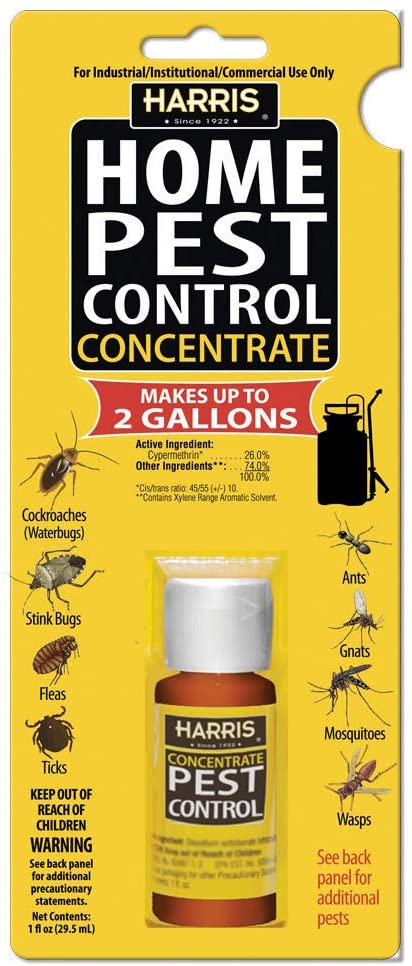Dependable A1 Bed Bug Exterminator Charlotte - Eliminate Bed Bugs Fast
Bed Bug Therapy Malfunction: Comparing Chemical Vs. Non-Chemical Solutions
In the realm of bug control, specifically when handling the relentless issue of bed insects, the option between chemical and non-chemical therapy options can be a crucial one. Both approaches use distinctive advantages and disadvantages, affecting variables such as efficiency, safety and security factors to consider, and overall expense. By analyzing the nuanced information of each approach, a more clear understanding of which path to seek in attending to a bed bug infestation can be achieved.
Efficiency of Chemical Therapies
Chemical treatments for bed insect invasions have been commonly acknowledged for their quick and powerful efficacy in getting rid of these bugs. When considering the performance of chemical treatments, it is critical to recognize that they can give a quick and comprehensive service to a bed insect issue. Specialist pest control specialists frequently depend on pesticides to target bed bugs at numerous stages of their life cycle, consisting of eggs, nymphs, and grownups. These chemicals typically work by interrupting the bed pests' nerves, resulting in paralysis and eventual fatality.
Furthermore, chemical therapies have the benefit of using residual results, suggesting that they can remain to eliminate bed bugs even after the first application. This residual action is particularly valuable in combating any type of prospective re-infestations. In addition, the rapid activity of chemical treatments can bring relief to individuals facing severe bed insect invasions, enabling them to restore control of their living rooms quickly.
Safety Worries With Chemical Solutions
When making use of chemical solutions for bed pest treatment is guaranteeing the safety and security of passengers and the setting,One vital element that requires careful consideration. While chemical treatments can be efficient in eradicating bed pests, they might posture threats if not dealt with effectively. One of the key security worry about chemical services is the potential injury they can cause to human wellness. Exposure to particular chemicals made use of in bed insect treatments can lead to respiratory system concerns, skin irritability, or other adverse reactions, particularly in people with pre-existing problems or level of sensitivities. Furthermore, incorrect application or dose of chemical pesticides can lead to toxic residues lingering in the cured area, posturing long-term wellness risks to owners.
Additionally, the ecological effect of chemical solutions is an additional significant factor to consider. Some pesticides used in bed pest therapies might be damaging to advantageous bugs, wildlife, and communities if they leach right into the soil or water supply. It is necessary to utilize chemical treatments sensibly, adhering to safety and security standards, and considering much less hazardous alternatives to mitigate these risks and make certain the effective and risk-free monitoring of bed bug infestations.
Benefits of Non-Chemical Methods
Taking into consideration the prospective safety problems and ecological impact linked with chemical services for bed pest therapy, exploring non-chemical methods provides an appealing choice with a number of unique benefits. Non-chemical therapies are eco friendly, as they do not add to air or water contamination, making them a sustainable choice for bug control.
Furthermore, non-chemical solutions can be efficient in targeting bed bugs, including hard-to-reach areas where chemical treatments might not permeate - A1 exterminators charlotte nc. Approaches such as warm treatment, vacuuming, steam cleansing, and cushion coverings supply extensive removal without the usage of harmful chemicals.
Limitations of Non-Chemical Treatments

Furthermore, non-chemical therapies typically need multiple applications to accomplish effective eradication. This can be time-consuming and may not always guarantee total elimination of all bed bugs and their eggs, particularly in concealed or hard-to-reach places.
Moreover, the success of non-chemical treatments heavily counts on proper execution and thoroughness, which can be challenging for people without specialist know-how. Poor application of non-chemical approaches may lead to insufficient eradication, causing consistent problems and the need for added treatments.
Therefore, while non-chemical treatments have their benefits, it is important to acknowledge these restrictions and consider them when identifying the most effective strategy pest control direct for handling bed pest invasions.
Expense Contrast: Chemical Vs. Non-Chemical Options
Provided the limitations connected with non-chemical treatments, a crucial element to evaluate in the context of bed bug administration is the expense contrast between chemical and non-chemical options. Chemical treatments commonly include the application of insecticides by professionals, which can vary from $250 to $900 per room, depending upon the extent of the invasion and the dimension of the area to be dealt with. On the other hand, non-chemical therapies like warmth treatment or vapor can be more costly, with expenses ranging from $1,000 to $6,000 for a whole home. While the first cost of chemical therapies may appear reduced, multiple therapies may be called for to totally eliminate the invasion, possibly enhancing the total cost. On the various other hand, non-chemical choices may give an extra lasting and green solution, although they can be cost-prohibitive for some people. Eventually, when thinking about the price of bed pest therapy choices, it is crucial to weigh the upfront expenses versus the efficiency and long-lasting sustainability of the selected technique.
Conclusion

Thinking about the prospective security problems and ecological effect connected with chemical options for bed insect treatment, exploring non-chemical approaches offers a promising option with several distinct advantages.Offered the constraints connected with non-chemical therapies, a vital element to examine in the context of bed insect management is the cost contrast between chemical and non-chemical choices. In contrast, non-chemical therapies like heat visit this site therapy or heavy steam can be more pricey, with prices ranging from $1,000 to $6,000 for a whole home. While the first expense of chemical treatments may seem reduced, several treatments might be needed to totally remove the infestation, possibly raising the general cost.In verdict, when comparing chemical and non-chemical bed pest therapy alternatives, it is important to take into consideration efficiency, safety and security, advantages, restrictions, and expense.